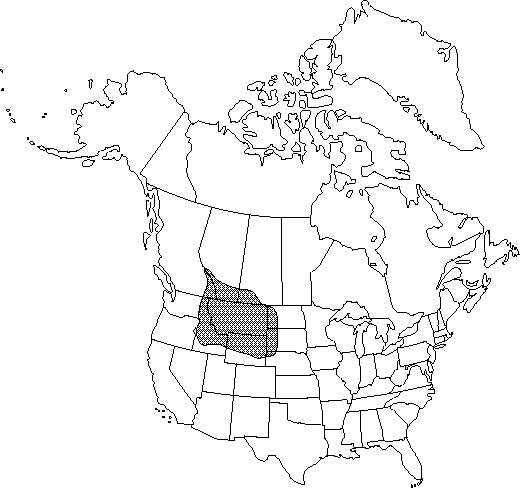familyRanunculaceae
genusDelphinium
subsectionDelphinium subsect. Bicoloria
speciesDelphinium bicolor
subspeciesDelphinium bicolor subsp. bicolor
Difference between revisions of "Delphinium bicolor subsp. bicolor"
EndemicIllustrated
Synonyms: Delphinium nuttallianum var. pilosum C. L. Hitchcock
Treatment appears in FNA Volume 3.
FNA>Volume Importer |
imported>Volume Importer |
||
| (7 intermediate revisions by 2 users not shown) | |||
| Line 1: | Line 1: | ||
{{Treatment/ID | {{Treatment/ID | ||
|accepted_name=Delphinium bicolor subsp. bicolor | |accepted_name=Delphinium bicolor subsp. bicolor | ||
| − | |accepted_authority= | + | |accepted_authority= |
|publications= | |publications= | ||
|special_status={{Treatment/ID/Special_status | |special_status={{Treatment/ID/Special_status | ||
| Line 8: | Line 8: | ||
}}{{Treatment/ID/Special_status | }}{{Treatment/ID/Special_status | ||
|code=F | |code=F | ||
| − | |label= | + | |label=Illustrated |
}} | }} | ||
|basionyms= | |basionyms= | ||
| Line 14: | Line 14: | ||
|name=Delphinium nuttallianum var. pilosum | |name=Delphinium nuttallianum var. pilosum | ||
|authority=C. L. Hitchcock | |authority=C. L. Hitchcock | ||
| + | |rank=variety | ||
}} | }} | ||
|hierarchy=Ranunculaceae;Delphinium;Delphinium sect. Diedropetala;Delphinium subsect. Bicoloria;Delphinium bicolor;Delphinium bicolor subsp. bicolor | |hierarchy=Ranunculaceae;Delphinium;Delphinium sect. Diedropetala;Delphinium subsect. Bicoloria;Delphinium bicolor;Delphinium bicolor subsp. bicolor | ||
| Line 22: | Line 23: | ||
}}<!-- | }}<!-- | ||
| − | --><span class="statement" id="st- | + | --><span class="statement" id="st-undefined" data-properties=""><b>Flowers:</b> sepals dark blue to purple, lateral sepals 16-21 × 6-11 mm, spurs 13-18 mm; lower petal blades with cleft less than 2 mm; hairs usually white.</span><!-- |
-->{{Treatment/Body | -->{{Treatment/Body | ||
| Line 29: | Line 30: | ||
|elevation=600-3100 m | |elevation=600-3100 m | ||
|distribution=Alta.;B.C.;Sask.;Idaho;Mont.;Nebr.;N.Dak.;S.Dak.;Wyo. | |distribution=Alta.;B.C.;Sask.;Idaho;Mont.;Nebr.;N.Dak.;S.Dak.;Wyo. | ||
| − | |discussion=<p>Rydberg's Delphinium bicolor var. montanense tends to have more pubescence and larger flowers but is otherwise typical and apparently fully intergrades with D. bicolor subsp. bicolor. Often referred to as one of the low larkspurs in poisonous-plant literature, the plant is abundant on some ranges and is the cause of some livestock poisonings.</p> | + | |discussion=<p>Rydberg's <i>Delphinium bicolor</i> var. montanense tends to have more pubescence and larger flowers but is otherwise typical and apparently fully intergrades with <i>D. bicolor </i>subsp.<i> bicolor</i>. Often referred to as one of the low larkspurs in poisonous-plant literature, the plant is abundant on some ranges and is the cause of some livestock poisonings.</p> |
|tables= | |tables= | ||
|references= | |references= | ||
| Line 38: | Line 39: | ||
-->{{#Taxon: | -->{{#Taxon: | ||
name=Delphinium bicolor subsp. bicolor | name=Delphinium bicolor subsp. bicolor | ||
| − | + | |authority= | |
| − | |authority= | ||
|rank=subspecies | |rank=subspecies | ||
|parent rank=species | |parent rank=species | ||
| Line 52: | Line 52: | ||
|publication title= | |publication title= | ||
|publication year= | |publication year= | ||
| − | |special status=Endemic; | + | |special status=Endemic;Illustrated |
| − | |source xml=https:// | + | |source xml=https://bitbucket.org/aafc-mbb/fna-data-curation/src/2e0870ddd59836b60bcf96646a41e87ea5a5943a/coarse_grained_fna_xml/V3/V3_15.xml |
|genus=Delphinium | |genus=Delphinium | ||
|section=Delphinium sect. Diedropetala | |section=Delphinium sect. Diedropetala | ||
| Line 59: | Line 59: | ||
|species=Delphinium bicolor | |species=Delphinium bicolor | ||
|subspecies=Delphinium bicolor subsp. bicolor | |subspecies=Delphinium bicolor subsp. bicolor | ||
| − | |||
| − | |||
| − | |||
| − | |||
| − | |||
}}<!-- | }}<!-- | ||
-->[[Category:Treatment]][[Category:Delphinium bicolor]] | -->[[Category:Treatment]][[Category:Delphinium bicolor]] | ||
Latest revision as of 22:46, 5 November 2020
Flowers: sepals dark blue to purple, lateral sepals 16-21 × 6-11 mm, spurs 13-18 mm; lower petal blades with cleft less than 2 mm; hairs usually white.
Phenology: Flowering late spring–early summer.
Habitat: Dry meadow edges, sage scrub, open woodlands and edges, not on soils derived from limestone
Elevation: 600-3100 m
Distribution

Alta., B.C., Sask., Idaho, Mont., Nebr., N.Dak., S.Dak., Wyo.
Discussion
Rydberg's Delphinium bicolor var. montanense tends to have more pubescence and larger flowers but is otherwise typical and apparently fully intergrades with D. bicolor subsp. bicolor. Often referred to as one of the low larkspurs in poisonous-plant literature, the plant is abundant on some ranges and is the cause of some livestock poisonings.
Selected References
None.
Lower Taxa
None.
